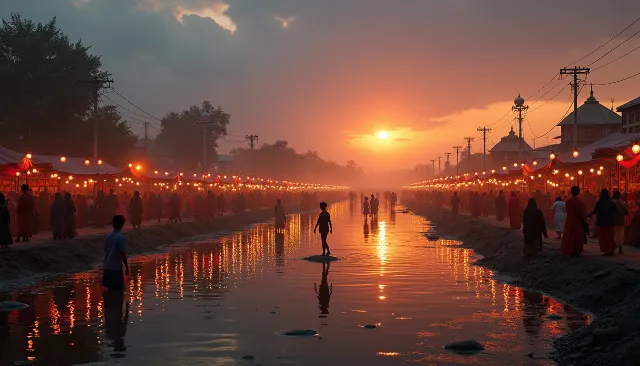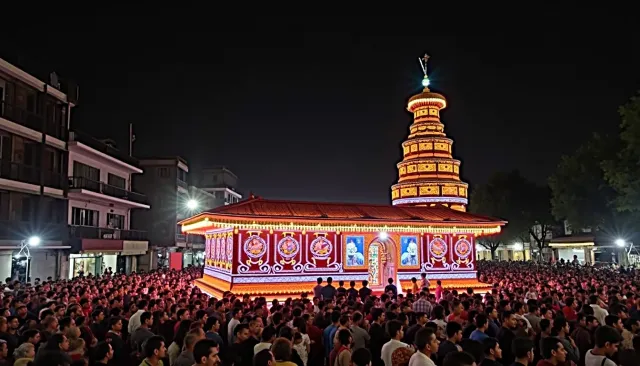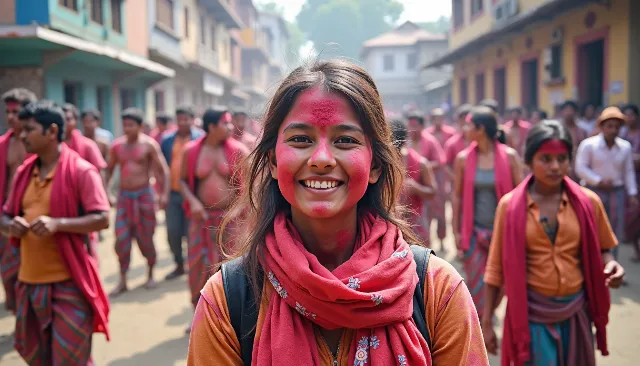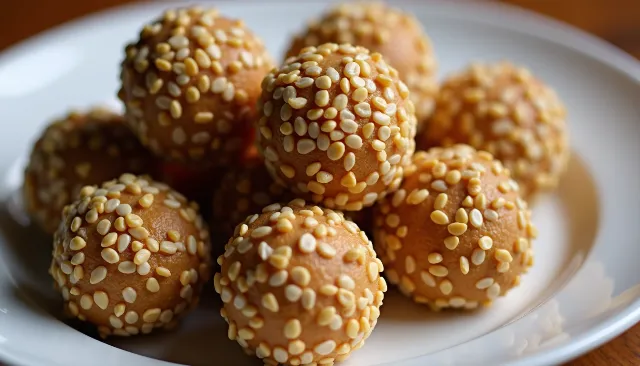1. Introduction: Discovering Nepal Through Its Festivals
Nepal is a small country with a big heart, full of beautiful mountains, rivers, and people. One of the best ways to understand Nepal is by experiencing its festivals. Nepali festivals are colorful, lively, and filled with happiness. They show the traditions, beliefs, and values of the people. For foreigners, joining these celebrations can be a fun way to learn about the country.
Festivals in Nepal are not just about rituals; they are about family, friends, and community. People wear traditional clothes, sing songs, dance, and eat delicious food. Children especially love festivals because they get to play with colors, lights, and sweets. Each festival has a story behind it, often related to religion, nature, or history. Learning these stories can help visitors understand Nepali culture deeply.

Travelers can plan their trips according to festival dates. This way, they can see the unique customs and enjoy local food and music. Some festivals happen all over the country, while others are special to certain regions or towns. By visiting during these times, foreigners can enjoy unforgettable experiences and meet warm, welcoming people. Festivals make Nepal a magical place for everyone.
2. Why Festivals Are an Integral Part of Nepali Culture
Festivals are very important in Nepal because they connect people to their culture and traditions. They are celebrated by everyone, from children to grandparents. Many Nepali festivals are based on religion, like Hinduism or Buddhism, but people of different religions often join in the fun. Celebrations create happiness and bring communities together.
During festivals, people show respect for nature, gods, and family. They clean their homes, wear colorful clothes, and prepare special foods. Some festivals involve dancing, singing, or playing games. Others may include prayers or offerings at temples. For example, during Tihar, people decorate their homes with lights and worship animals like cows and dogs. These actions are not only fun but also teach important values like respect and kindness.
For foreigners, festivals are a great way to see Nepali life in action. They can try local food, learn traditional dances, and take part in cultural activities. Watching locals celebrate with joy and togetherness can leave visitors with warm memories. Festivals are like a window into Nepali society, showing both history and everyday life in a colorful way.
3. Understanding the Nepali Calendar and Festival Dates
Nepal follows a special calendar called the Vikram Samvat, which is different from the Gregorian calendar used in most countries. Because of this, festival dates change every year when compared to Western calendars. For example, Dashain and Tihar usually fall in September or October, but the exact day changes each year. Knowing the Nepali calendar can help visitors plan their trips to join celebrations.
Many festivals follow the lunar cycle, so they are based on the moon. Some are tied to the sun or seasons. For instance, Maghe Sankranti celebrates the sun’s movement and the start of longer days. Holi is celebrated when spring begins. Understanding this makes it easier to enjoy the festival at the right time and see all the rituals.
Foreigners can use online calendars, travel guides, or local advice to check festival dates. Being aware of the timing helps in booking hotels and transportation because places can get crowded during major festivals. Festivals are more than parties; they are an experience of history, tradition, and community life. Visiting during these times shows the real spirit of Nepal.
4. Dashain: The Grand Celebration of Victory and Family
Dashain is the biggest and most famous festival in Nepal. It usually lasts 15 days and celebrates the victory of good over evil. Families come together to celebrate with love, respect, and happiness. People clean their homes, decorate them with flowers, and set up colorful swings in villages. It is a time when everyone forgets daily worries and focuses on family and traditions.
During Dashain, elders give blessings to younger family members by putting tika (a red mark) on their foreheads and giving jamara (barley shoots). Families prepare delicious foods like meat curries, sweets, and special rice dishes. It is also a time for shopping, buying new clothes, and visiting relatives. Children love receiving gifts and playing with their cousins during this festival.
Dashain is a great festival for foreigners to see Nepali culture up close. Tourists can visit local homes, temples, and villages to watch rituals and enjoy cultural performances. The festival is full of joy, laughter, and energy. It teaches values like respect, love, and family unity, making it a meaningful experience for both locals and visitors.
5. Tihar: The Festival of Lights and Animal Worship
Tihar, also called Deepawali, is Nepal’s festival of lights. It usually happens five days after Dashain and celebrates the relationship between humans, animals, and gods. During Tihar, people decorate their homes with colorful lamps called diyas and make beautiful patterns on the floor called rangoli. It is a bright and cheerful festival, loved by both children and adults.
Each day of Tihar honors something different. The first day is for crows, the second for dogs, the third for cows and Lakshmi, the goddess of wealth, the fourth for brothers, and the fifth for sisters. People offer food, garlands, and prayers to these animals and family members. Dogs and cows are fed and celebrated because they are important in daily life and culture.
For foreigners, Tihar is a wonderful way to experience Nepal’s traditions. You can join candle-lighting ceremonies, see decorated streets, and try traditional sweets like sel roti and laddoo. It is a friendly festival where locals welcome tourists to see their homes and customs. Tihar teaches respect for nature, animals, and family, making it a beautiful festival to witness.
6. Holi: Nepal’s Colorful Spring Festival
Holi is the festival of colors, celebrated in March, marking the arrival of spring. People throw colored powders, splash water, and dance on the streets. Holi is a very fun festival for everyone, especially children, because it is full of laughter, music, and play. The whole country looks bright and cheerful during Holi.
Holi has a story from Hindu mythology about the victory of good over evil. People forget past arguments and greet each other with colors and happiness. Families and friends meet to enjoy traditional foods and drinks like gujiya and bhang. In some towns, cultural programs and songs are organized to make the festival lively.
Foreigners can safely join Holi celebrations in Nepal by wearing old clothes and using safe, natural colors. Participating in Holi helps travelers connect with locals and enjoy the playful spirit of Nepali culture. It is a festival of joy, friendship, and new beginnings that everyone can enjoy.
7. Maghe Sankranti: Welcoming the Winter Sun
Maghe Sankranti is celebrated in January to mark the sun’s northward journey. It is one of the oldest festivals in Nepal and is mainly observed in the hilly and Terai regions. People wake up early, take holy baths in rivers, and eat special foods like sesame seeds, molasses, and yam. These foods are believed to keep the body warm and healthy during winter.
The festival is a time for family gatherings and traditional prayers. People visit temples, give offerings, and share meals with neighbors. It is also a day to remember ancestors and seek blessings for a good year ahead. In villages, people sing folk songs and enjoy traditional dances, making the day lively.
For visitors, Maghe Sankranti is a unique experience. You can taste local foods, see traditional rituals, and enjoy the scenic beauty of snowy mountains. It is a peaceful and spiritual festival that shows Nepal’s connection with nature and seasonal changes.
8. Buddha Jayanti: Honoring the Birth of Lord Buddha
Buddha Jayanti is one of the most important festivals for Buddhists in Nepal. It celebrates the birth, enlightenment, and death of Lord Buddha. It usually falls in April or May, during the full moon. The festival is especially grand in Lumbini, the birthplace of Buddha, where thousands of pilgrims visit temples and monasteries.
During Buddha Jayanti, people light butter lamps, chant prayers, and offer flowers. Devotees walk around stupas and monasteries as a sign of respect. Schools and communities organize cultural programs, processions, and exhibitions about Buddha’s life. It is a peaceful and spiritual festival that teaches love, kindness, and non-violence.
For foreigners, Buddha Jayanti offers a chance to learn about Buddhism and Nepali culture. You can visit temples, join meditation sessions, and see colorful decorations and ceremonies. The festival is calm and reflective, giving travelers an opportunity to understand Nepal’s spiritual traditions.
9. Teej: A Celebration of Women and Fasting
Teej is a special festival for women in Nepal. It usually happens in August or September and celebrates the bond between women and their families. Women fast, pray, and dress in red, which is considered a lucky color. It is a joyful festival full of songs, dancing, and traditional rituals.
During Teej, women visit temples, especially those of Lord Shiva and Goddess Parvati, to pray for the health and long life of their husbands or future husbands. They sing folk songs about love, marriage, and devotion. In villages, groups of women dance together in the streets and share happiness. Even unmarried girls participate, hoping for good relationships in the future.
Foreigners can enjoy Teej by watching the colorful celebrations and understanding Nepali traditions. Tourists can visit temples, observe dances, and see women’s colorful dresses. While outsiders usually don’t fast, they are welcomed to enjoy the cultural experience. Teej shows respect for women, family bonds, and devotion, making it a meaningful festival for everyone to see.
10. Ghode Jatra: Horse Parade and Cultural Spectacle
Ghode Jatra is a lively festival celebrated in Kathmandu in April. It is famous for its horse races and parades. The festival is believed to scare away demons and protect the city. People from all over Nepal come to watch the horses run and enjoy the festive atmosphere.
The main event happens in Tundikhel, a large open ground in Kathmandu. Soldiers and horse riders show tricks, jumps, and races that are exciting for children and adults. Traditional music, drums, and cheering crowds make the festival full of energy. Families enjoy picnics while watching the performances.
For foreigners, Ghode Jatra is a fun and unique experience. It is a chance to see traditional horsemanship and learn about Nepali beliefs. Tourists can take photos, meet locals, and enjoy the festive food stalls around the area. Ghode Jatra is a perfect festival to experience Nepal’s cultural pride and lively spirit.
11. Indra Jatra: Kathmandu’s Vibrant Street Festival
Indra Jatra is one of the most colorful festivals in Kathmandu. It usually happens in September and celebrates Lord Indra, the god of rain. The festival lasts eight days and includes dances, processions, and rituals. Streets are decorated with flags, flowers, and lights, making the city lively and joyful.
A major highlight is the Kumari Jatra, where the living goddess Kumari is paraded through the city on a chariot. People gather to watch masked dances and traditional performances. The festival brings communities together, and locals offer prayers for a good harvest. Children love the street performances and sweets sold during the festival.
For foreigners, Indra Jatra is a chance to see traditional Newar culture up close. Tourists can enjoy music, dance, and local food while learning about myths and customs. The festival is colorful, lively, and welcoming, making it an unforgettable experience for visitors.
12. Janai Purnima: Sacred Threads and Pilgrimage
Janai Purnima is a festival that honors sacred threads called janai, worn by Hindu men. It usually falls in August and is also known as Raksha Bandhan in some regions. People visit rivers and temples to change their sacred threads and pray for protection and good luck.
On this day, men take holy baths and wear new janai threads. Women often tie protective threads on the wrists of their brothers and relatives. Pilgrims travel to sacred sites like Pashupatinath and Gosaikunda to offer prayers. Festivals like this show the importance of family, faith, and tradition in Nepal.
Foreigners can observe the rituals respectfully and even visit riversides or temples to see the ceremonies. It is a peaceful festival with spiritual significance, offering a deep understanding of Nepali beliefs. Janai Purnima is both a family-oriented and culturally rich experience for travelers.
13. Chhath: Sun Worship Across the Terai Region
Chhath is a festival dedicated to the Sun God, celebrated mainly in the Terai region of Nepal. It usually occurs in October or November, lasting four days. People thank the Sun for health, prosperity, and happiness. Devotees offer prayers while standing in rivers or ponds, making the festival a beautiful sight.
During Chhath, families prepare special foods like thekua, fruits, and sweets. Women, and sometimes men, fast and stand in water for hours while praying. The festival emphasizes respect for nature, especially the sun and rivers. Communities gather on riverbanks to sing songs, share food, and celebrate together.
For foreigners, Chhath is a unique cultural experience. Visitors can watch colorful rituals, traditional songs, and community gatherings. It is a peaceful festival, with devotion and gratitude at its heart. Seeing locals perform these ancient traditions gives tourists a better understanding of Nepali life and spirituality.
14. Gai Jatra: A Festival of Cows and Remembrance
Gai Jatra, or the “Cow Festival,” is celebrated to honor those who have passed away. It usually falls in August or September and is especially popular in the Kathmandu Valley. Families who lost loved ones during the year participate in the festival, symbolically helping souls reach heaven.
People dress in funny costumes, perform dances, and parade cows or children dressed as cows. The festival includes music, comedy, and street performances. While it has a serious meaning, it is also filled with laughter and joy to remind people that life should be celebrated even after loss.
Foreigners can observe Gai Jatra in Kathmandu or nearby towns. It is a culturally rich festival that shows how Nepalis combine remembrance with celebration. Tourists can see unique traditions, costumes, and joyful community participation, making it both moving and entertaining.
15. New Year Celebrations: Nepal Sambat and Gregorian Traditions
Nepal celebrates several New Years. The traditional Nepal Sambat and the Gregorian New Year are both observed. Nepal Sambat usually falls in October or November, marking the harvest season. People clean homes, prepare special foods, and organize cultural programs.
During the Gregorian New Year on January 1st, young people often celebrate with parties and fireworks. Families may also visit temples to pray for a prosperous year. Both New Year celebrations focus on new beginnings, family bonds, and hope for the future.
Foreigners can enjoy New Year in Nepal by joining public celebrations, tasting festival foods, and observing traditional rituals. These events show both modern and ancient aspects of Nepali life. It is a great time to meet locals and experience the country’s lively spirit.
16. Local and Regional Festivals: Hidden Gems of Nepal
Nepal is home to many small, regional festivals that are not widely known. These local festivals are celebrated in villages and towns across the country. They often honor local deities, agricultural cycles, or historical events. Each festival has its own traditions, dances, and foods.
For example, in some hill regions, people celebrate rice planting festivals with music and folk dances. In Terai, local fairs include singing, storytelling, and craft exhibitions. These hidden festivals give a real sense of community life and local culture, away from city crowds.
Foreigners who visit these festivals get a unique experience. They can taste authentic local foods, watch traditional dances, and see ancient rituals up close. These regional celebrations are a great way to explore Nepal beyond the popular tourist sites.
17. Food and Sweets: Culinary Delights During Festivals
Nepali festivals are not complete without delicious food and sweets. Every festival has its special dishes that bring people together. For example, during Dashain, families prepare meat curries and sel roti, a sweet rice bread. During Tihar, sweets like laddoo and barfi are common. These treats are shared with family, friends, and neighbors.
Food is an important part of celebrating and showing love. People cook together, exchange dishes, and enjoy meals with joy. Children especially love festival foods because they are sweet, colorful, and fun to eat. Festivals also introduce foreigners to new flavors and traditional recipes that they may not find elsewhere.
For visitors, tasting festival foods is a delightful experience. Street stalls, family homes, and community events offer a variety of dishes to try. Eating together during festivals helps travelers connect with locals and understand Nepali culture. Food becomes a bridge between tradition and fun, making every festival memorable for everyone.
18. Traditional Dress and Rituals to Observe
During Nepali festivals, people wear traditional clothes that vary by region and occasion. Women often wear sarees or gunyo-cholo, while men wear daura-suruwal or kurta. Bright colors like red, yellow, and green are popular, symbolizing joy, luck, and celebration. Kids also wear new clothes during festivals.
Rituals are an important part of the celebration. People light lamps, pray at temples, and give offerings to gods, ancestors, or animals. Some festivals involve singing, dancing, and processions through the streets. Observing these rituals helps foreigners understand the spiritual and cultural meaning behind the festivities.
Visitors can respectfully enjoy the sight of traditional dress and rituals. Photography is usually welcomed, but asking permission is polite. Wearing comfortable clothes and shoes helps tourists explore celebrations safely. Seeing the colors, music, and rituals up close gives a true taste of Nepali life.
19. Festival Etiquette: How to Participate Respectfully
When attending Nepali festivals, it is important for foreigners to follow simple etiquette. Respect the local customs, dress modestly, and observe before participating in rituals. Many festivals involve temples and sacred spaces, so speaking softly and removing shoes is appreciated.
Interactions with locals are usually friendly, and showing interest in their culture is welcomed. Ask permission before taking photos of people or rituals. Avoid touching sacred items unless invited. Learning a few words in Nepali, like “Namaste” or “Dhanyabad,” helps show respect and friendliness.
By following festival etiquette, travelers can enjoy celebrations without disturbing local traditions. Participating respectfully allows visitors to experience authentic culture, connect with communities, and create lasting memories. Festivals are a time for learning, joy, and sharing happiness.
20. Tips for Travelers: Planning Your Festival Adventure
Planning ahead is key to enjoying Nepali festivals. Check the dates according to the Nepali calendar, book accommodations early, and prepare for crowded streets during popular festivals like Dashain or Tihar. Carry water, snacks, and comfortable clothes for walking or standing long hours.
Learn about the festival’s meaning and rituals before attending. This helps visitors understand what they see and participate respectfully. Joining guided tours or visiting local cultural centers can enhance the experience. Don’t forget to try local foods and watch traditional dances.
Travelers should also keep safety in mind, especially during large crowds or outdoor celebrations. Festivals are an amazing way to explore Nepali culture, meet friendly locals, and capture colorful memories. With planning, curiosity, and respect, visitors can enjoy the magic of Nepali festivals to the fullest.






